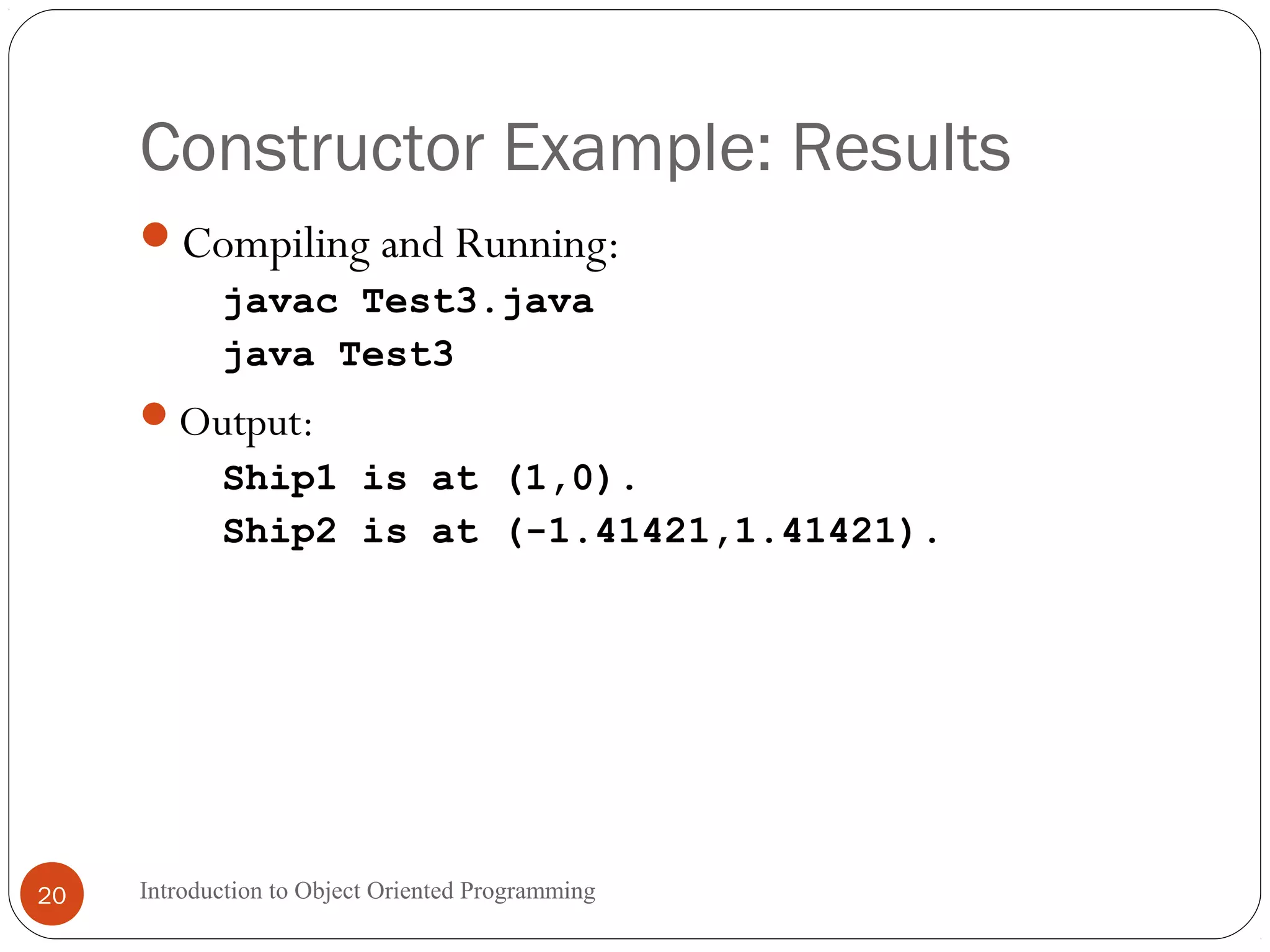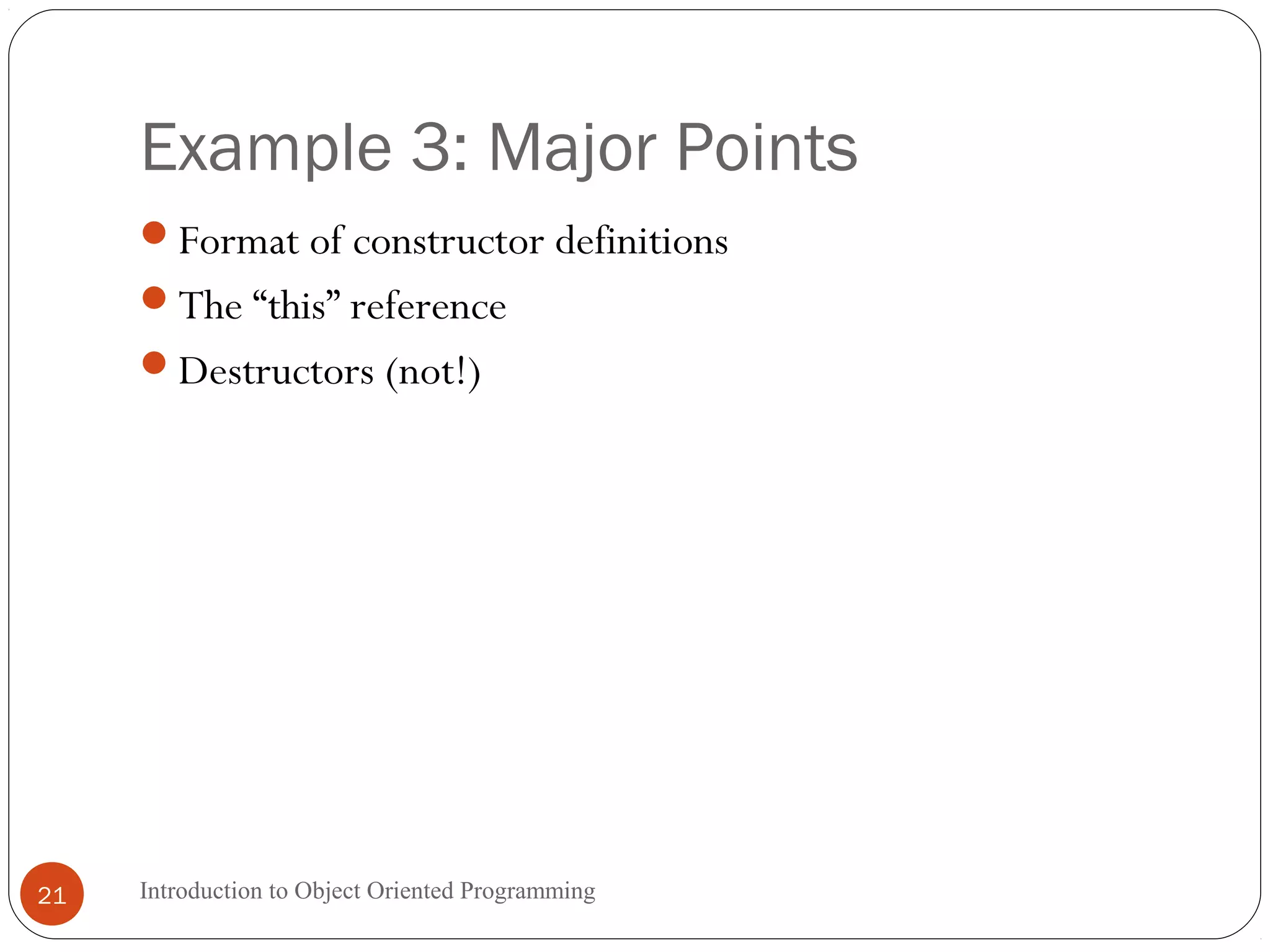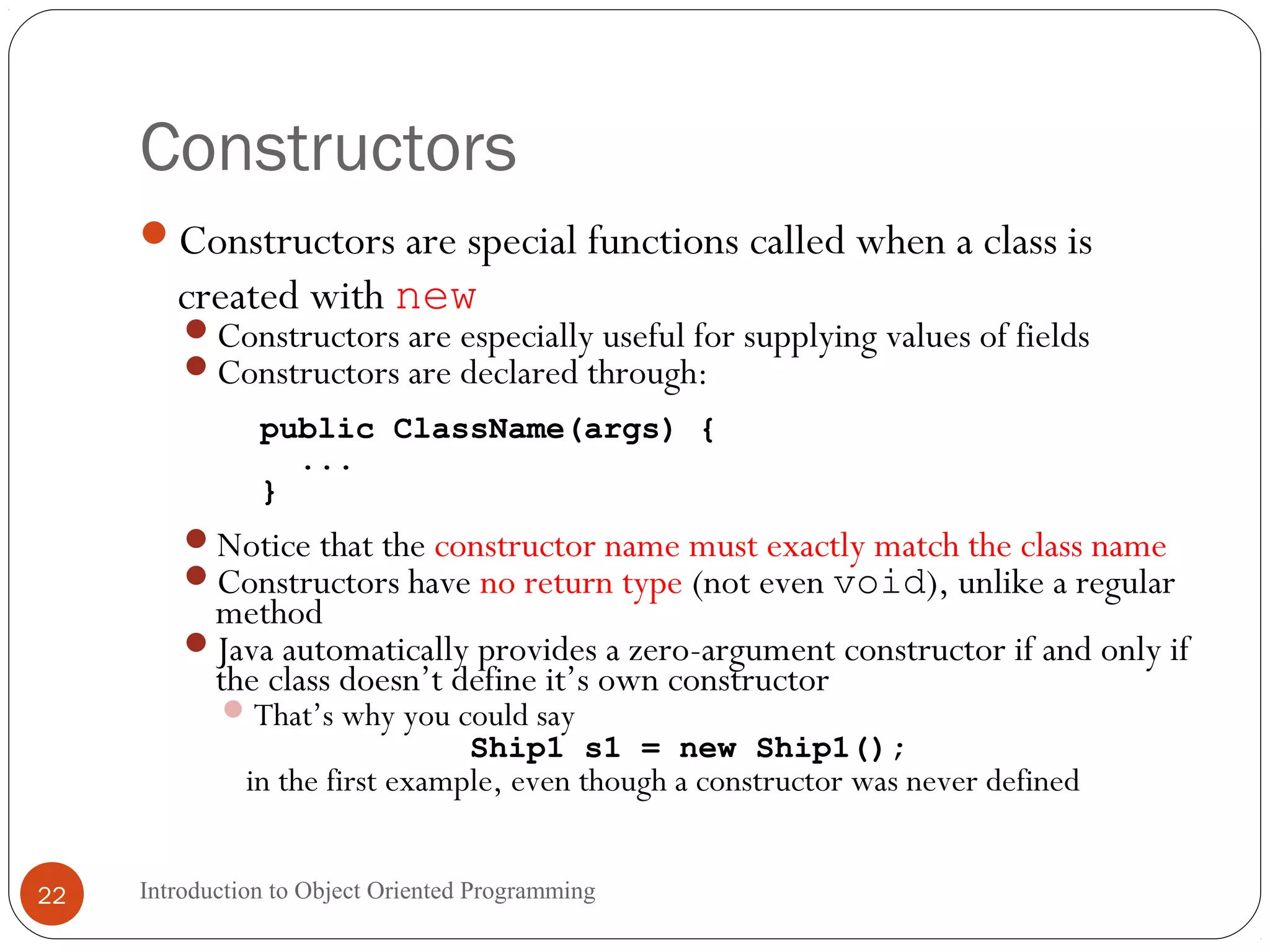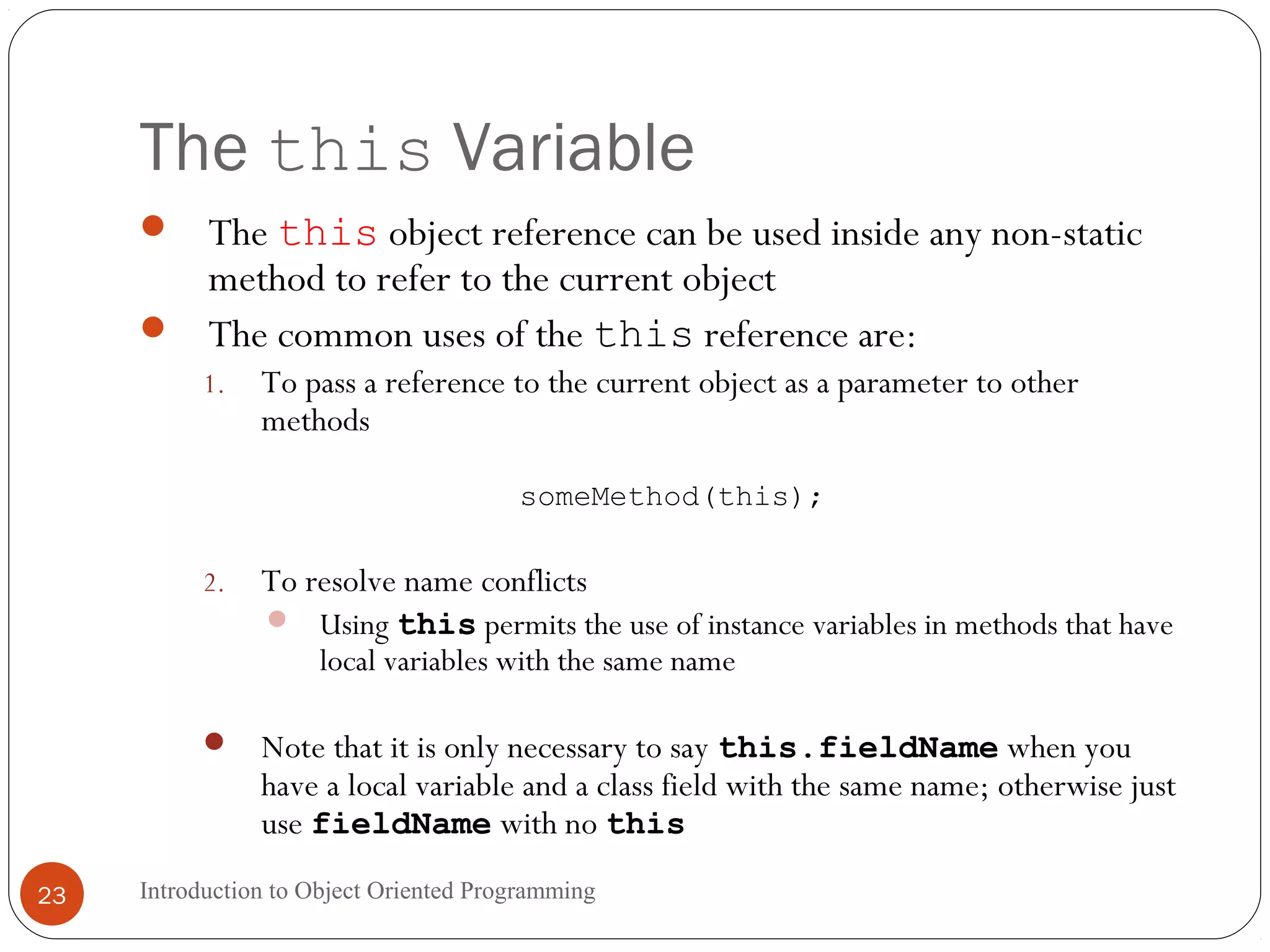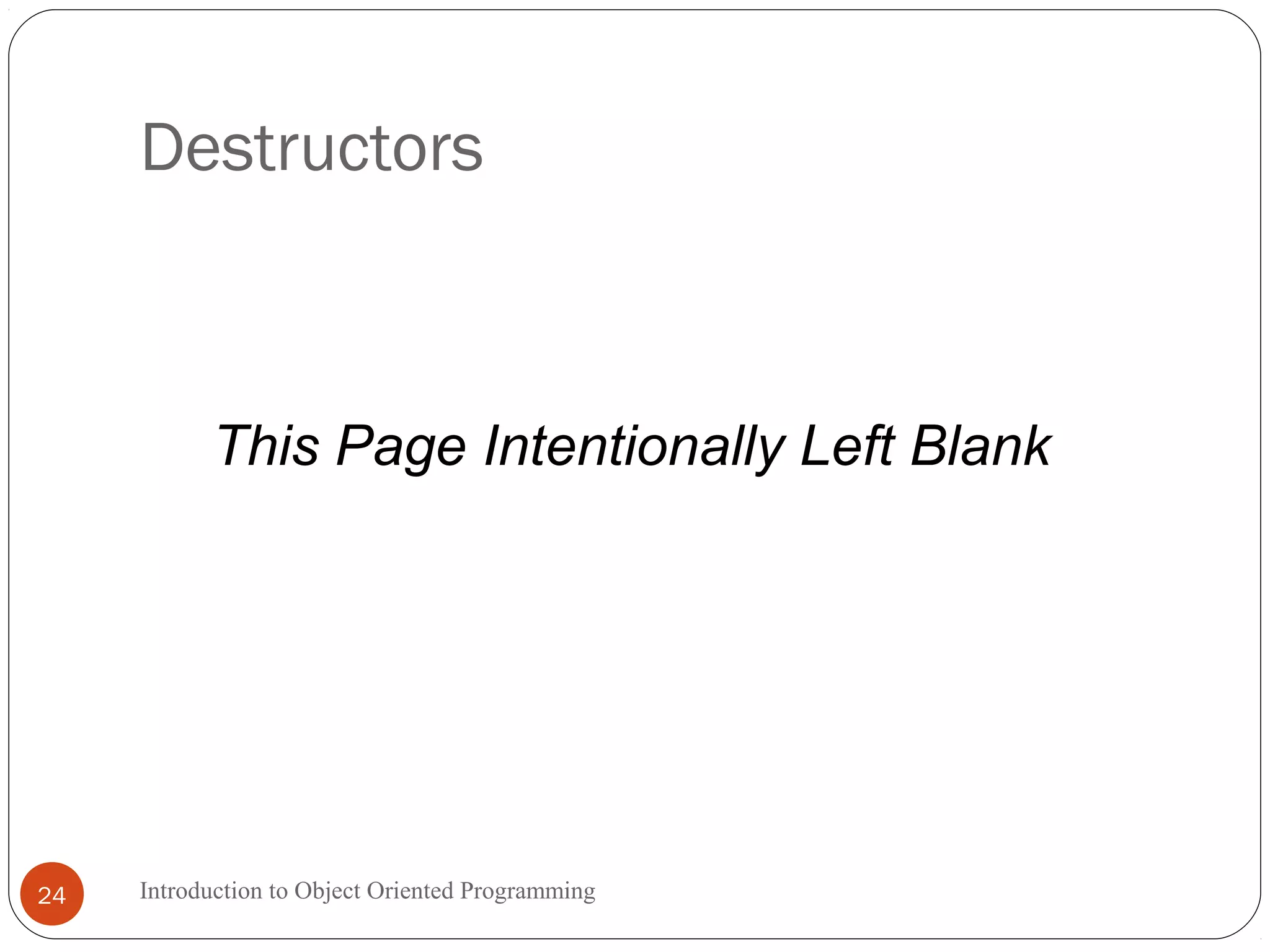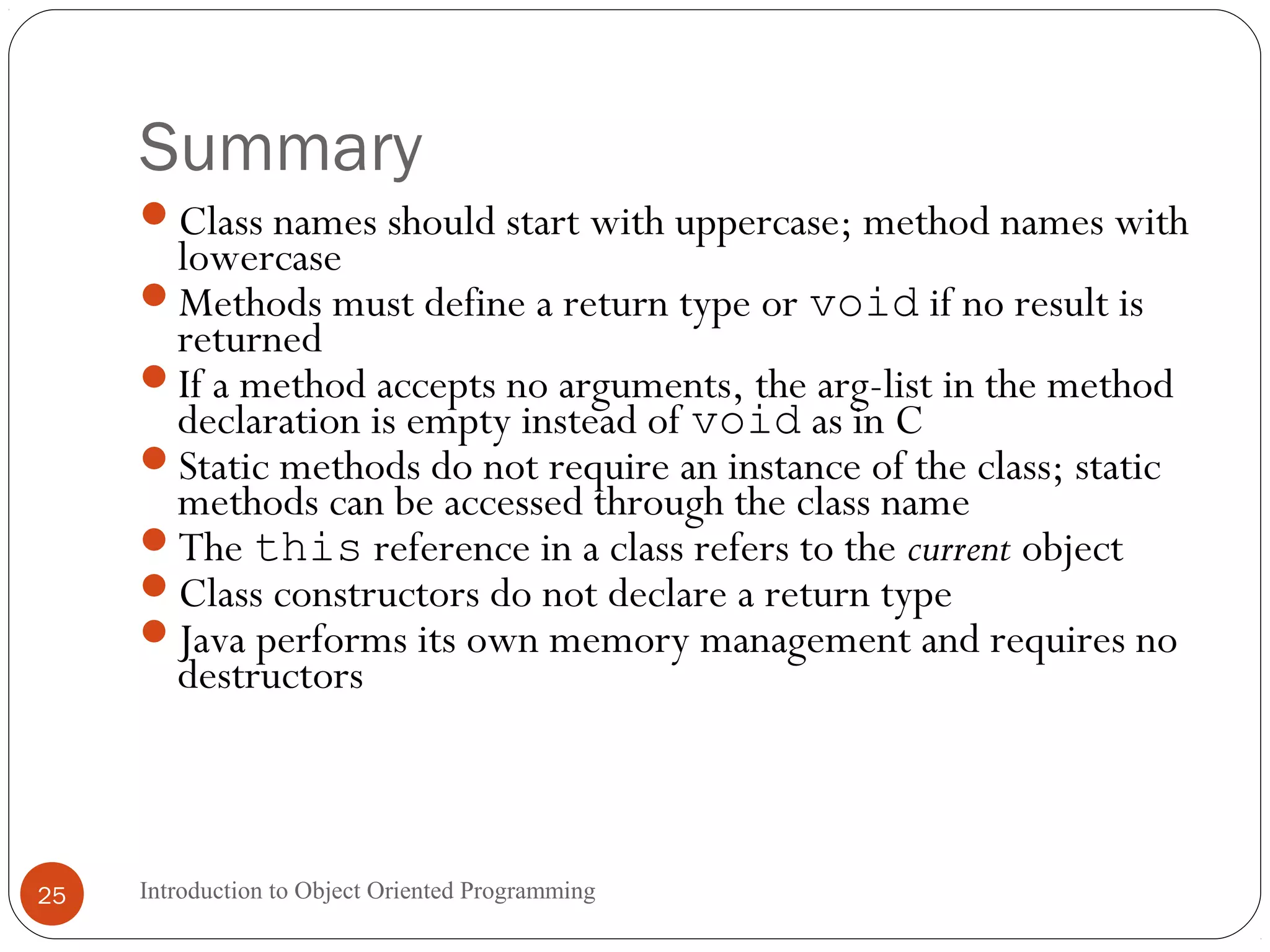The document provides an introduction to object-oriented programming concepts in Java, including: 1. Classes define the structure and behavior of objects through fields (instance variables) and methods. 2. Objects are instances of classes that can access fields and methods using dot notation. 3. Methods define the actions objects can perform, while constructors initialize new objects by setting field values. 4. The "this" keyword differentiates instance fields from local variables within methods when they have the same name.
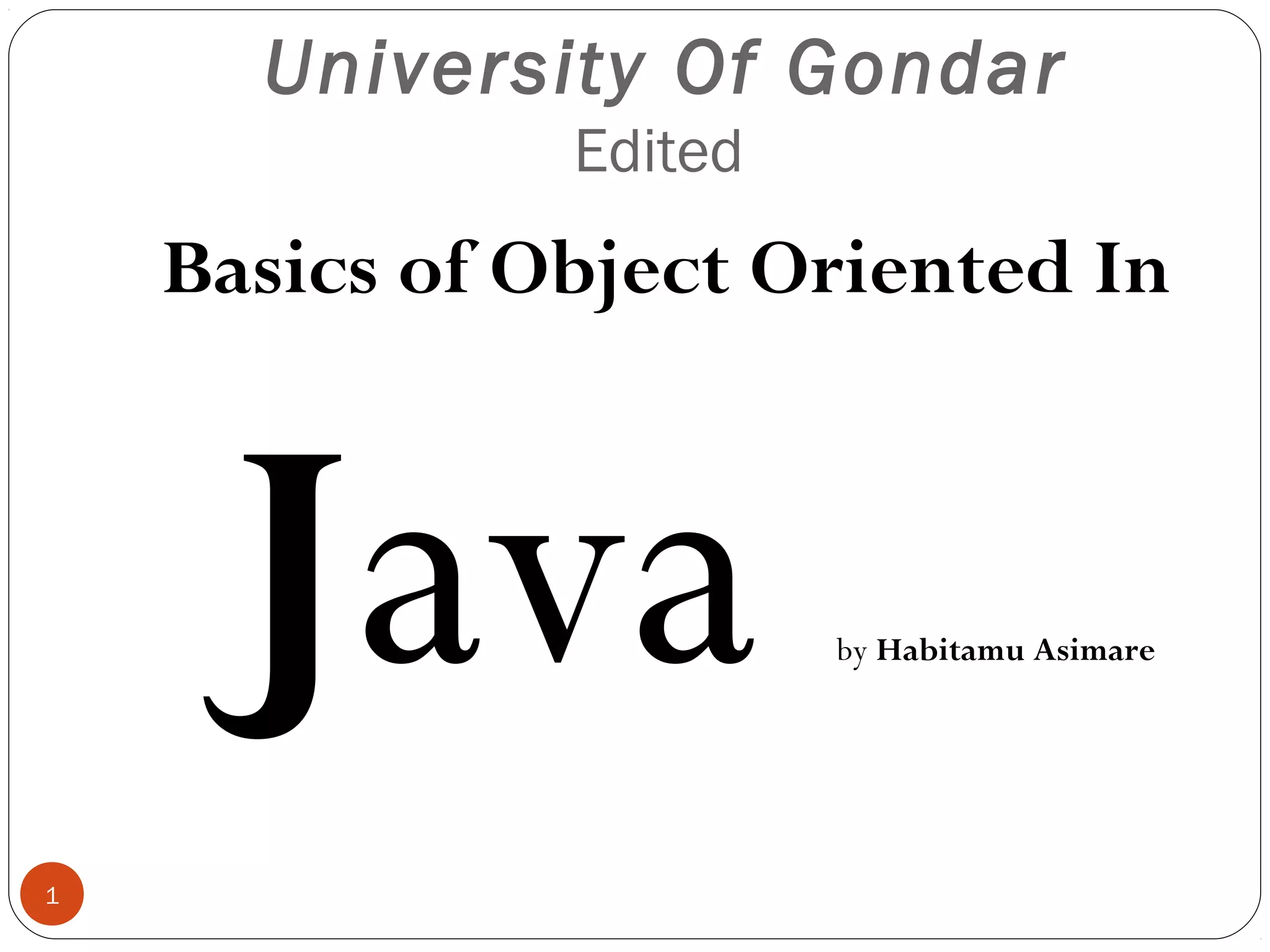
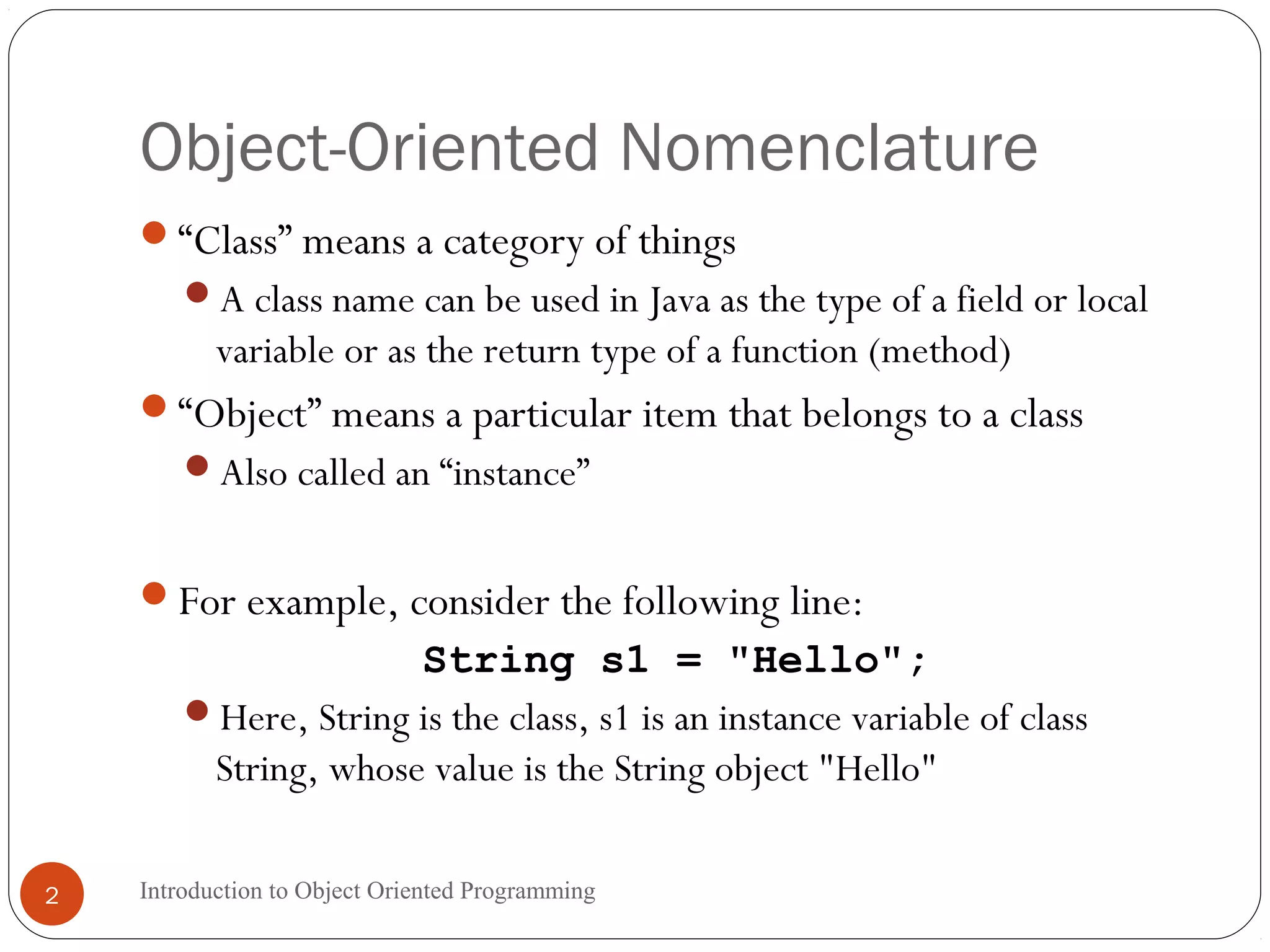
![Example 1: Instance Variables (“Fields” or “Data Members”) Introduction to Object Oriented Programming3 class Ship1 { public double x, y, speed, direction; public String name; } public class Test1 { public static void main(String[] args) { Ship1 s1 = new Ship1(); s1.x = 0.0; s1.y = 0.0; s1.speed = 1.0; s1.direction = 0.0; // East s1.name = "Ship1"; System.out.println(s1.name + " is initially at (" + s1.x + "," + s1.y + ")."); s1.x = s1.x + s1.speed * Math.cos(s1.direction * Math.PI / 180.0); s1.y = s1.y + s1.speed * Math.sin(s1.direction * Math.PI / 180.0); System.out.println(s1.name + " has moved to (" + s1.x + "," + s1.y + ")."); } }](https://image.slidesharecdn.com/javabasic-150605180937-lva1-app6891/75/Java-basic-understand-OOP-3-2048.jpg)
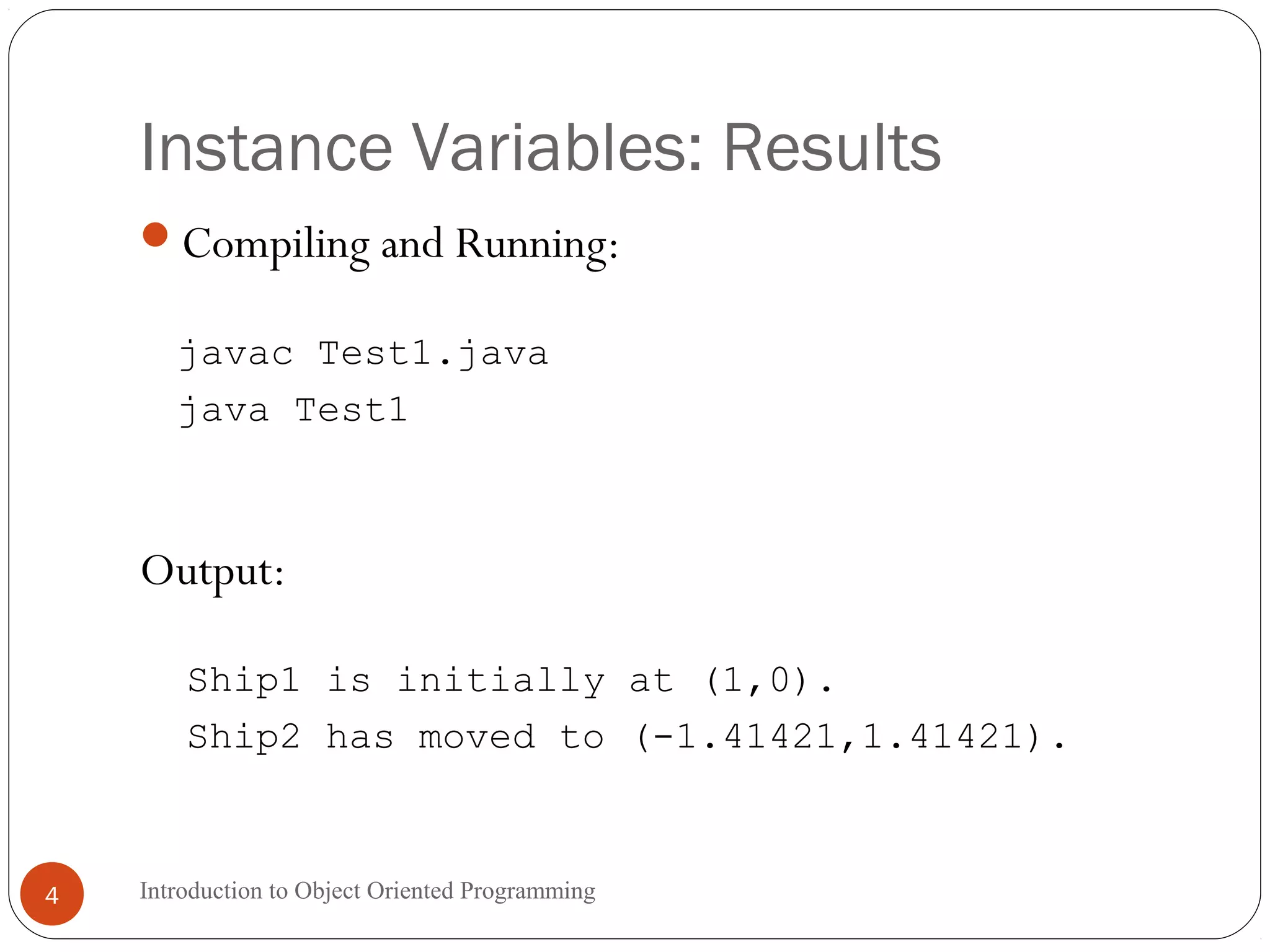
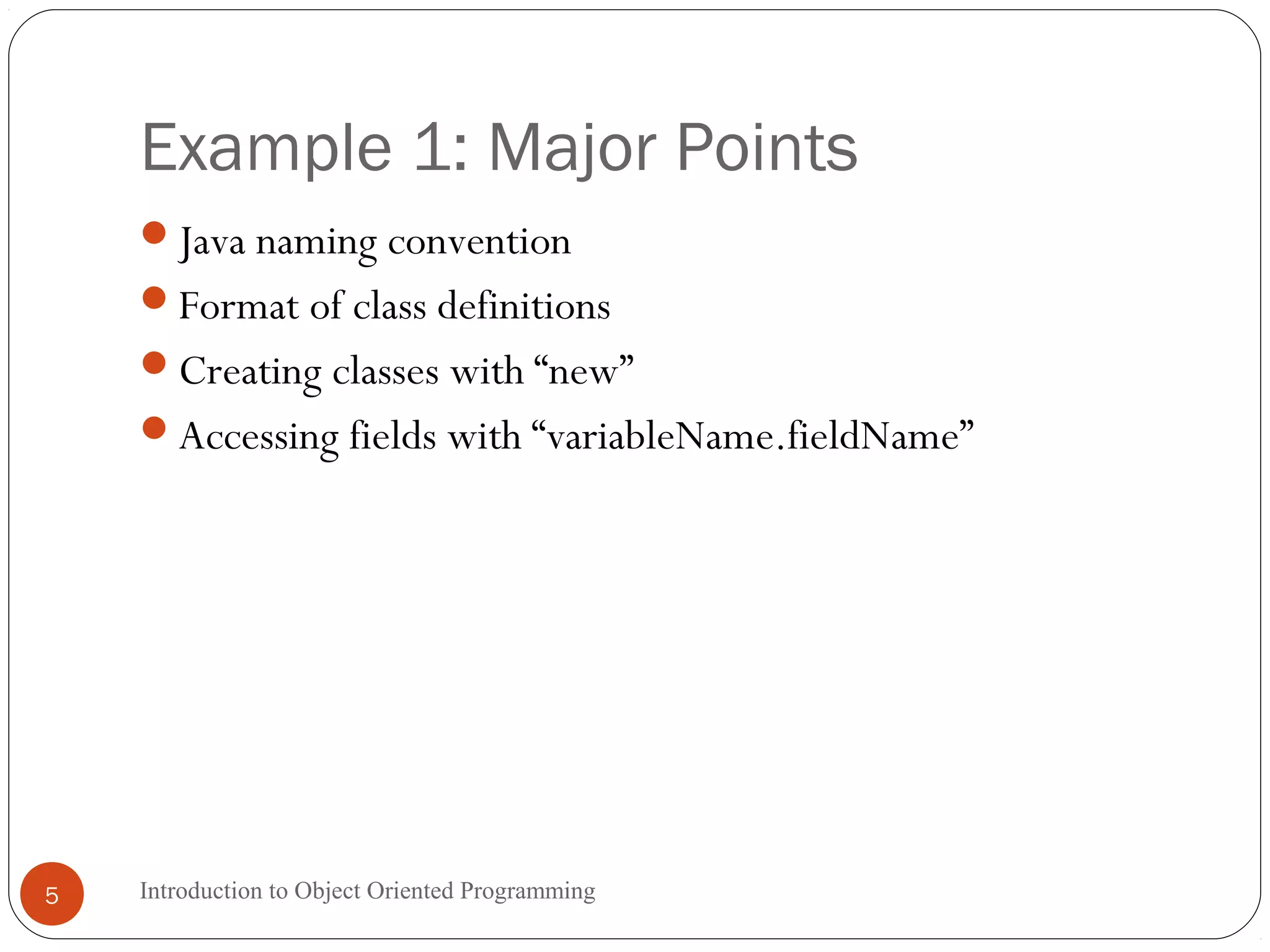
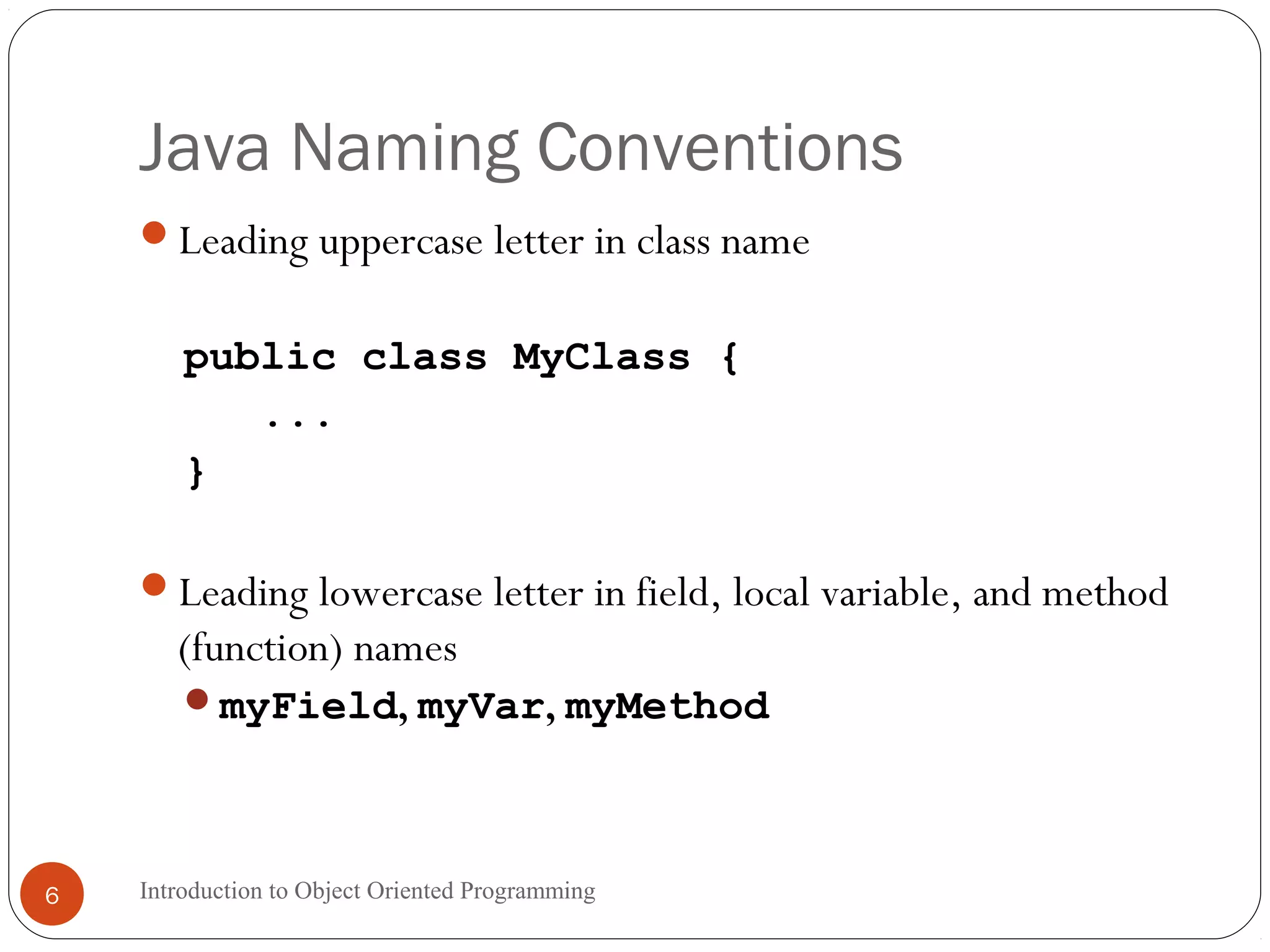
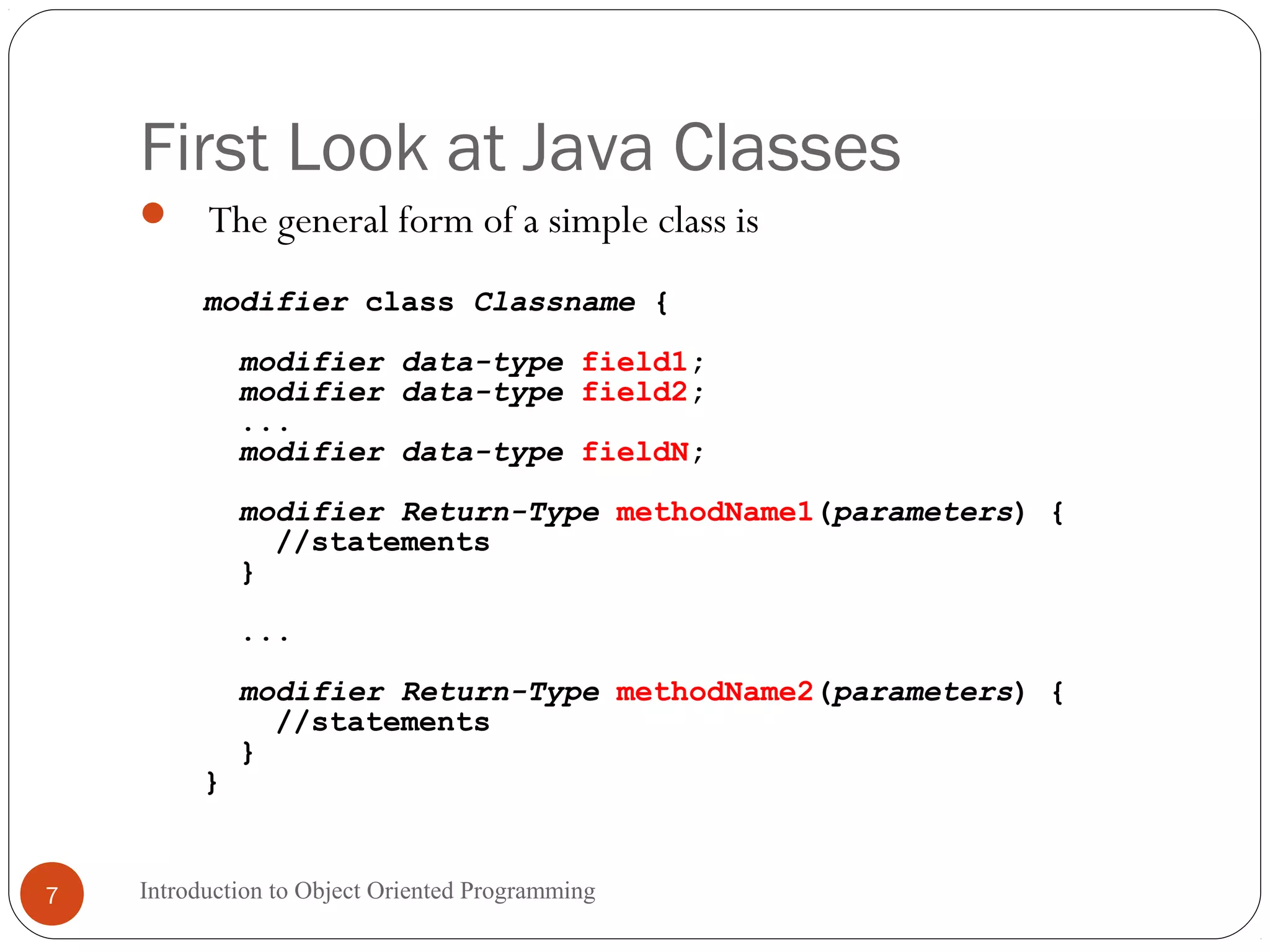
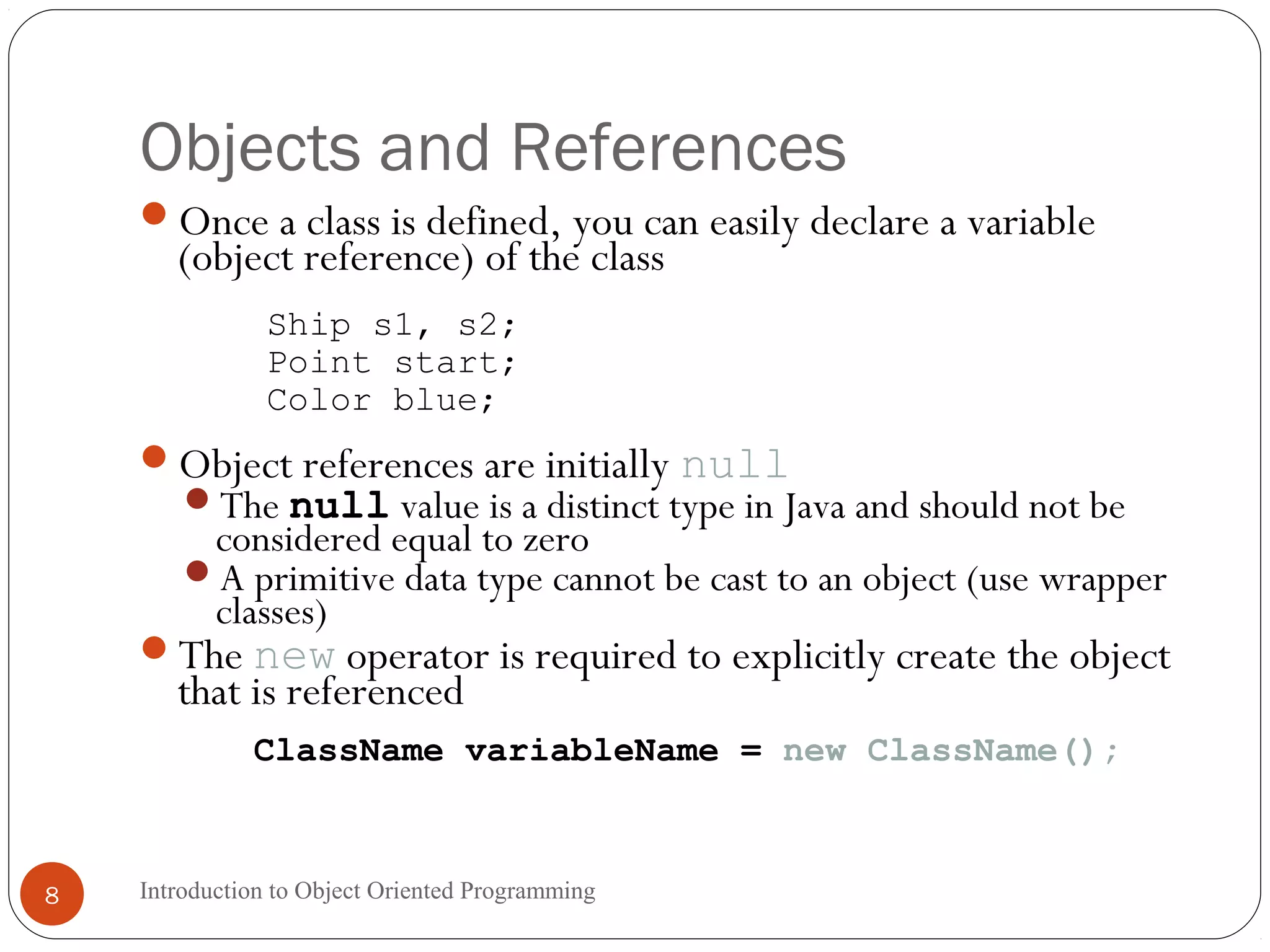
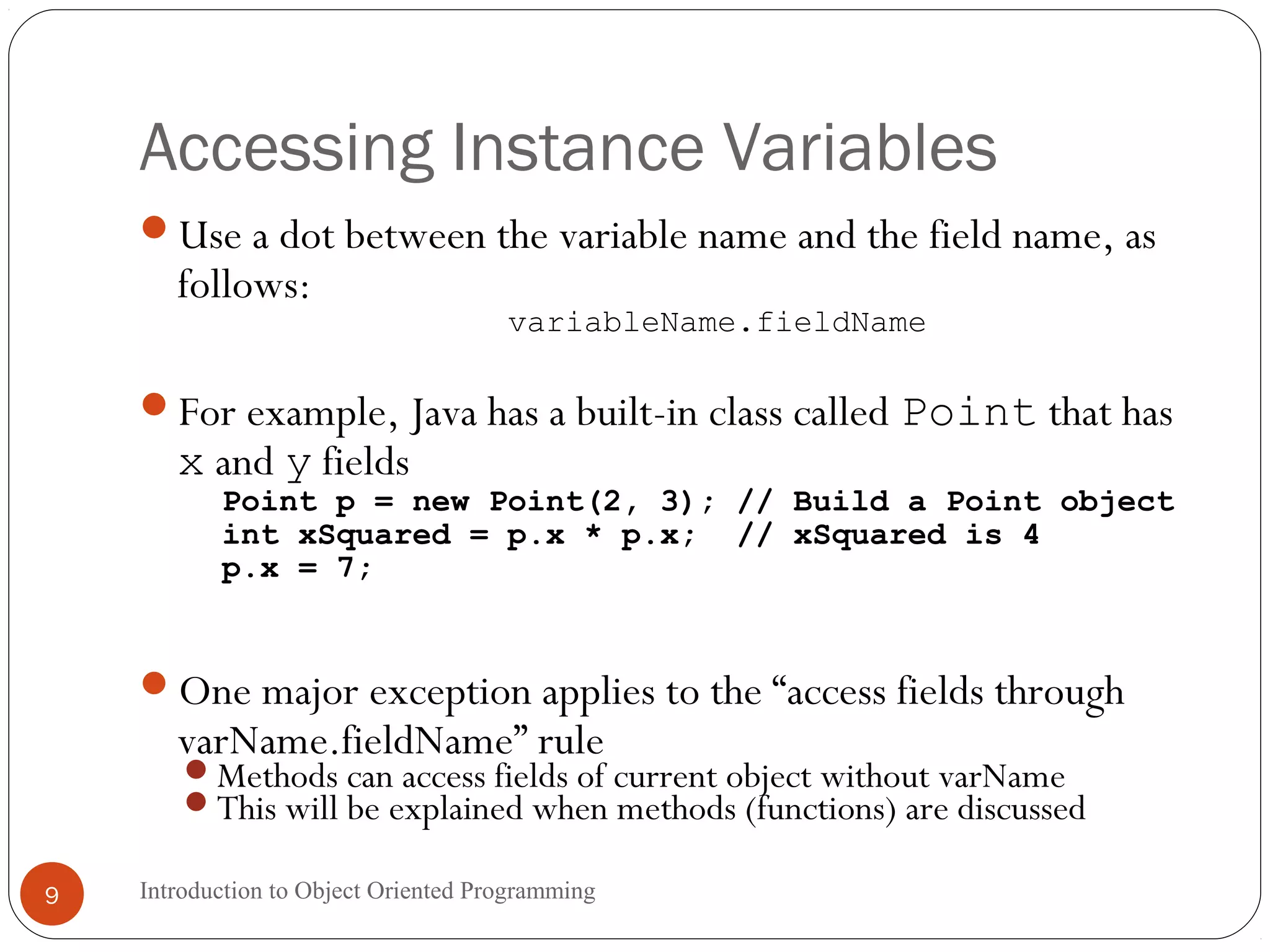
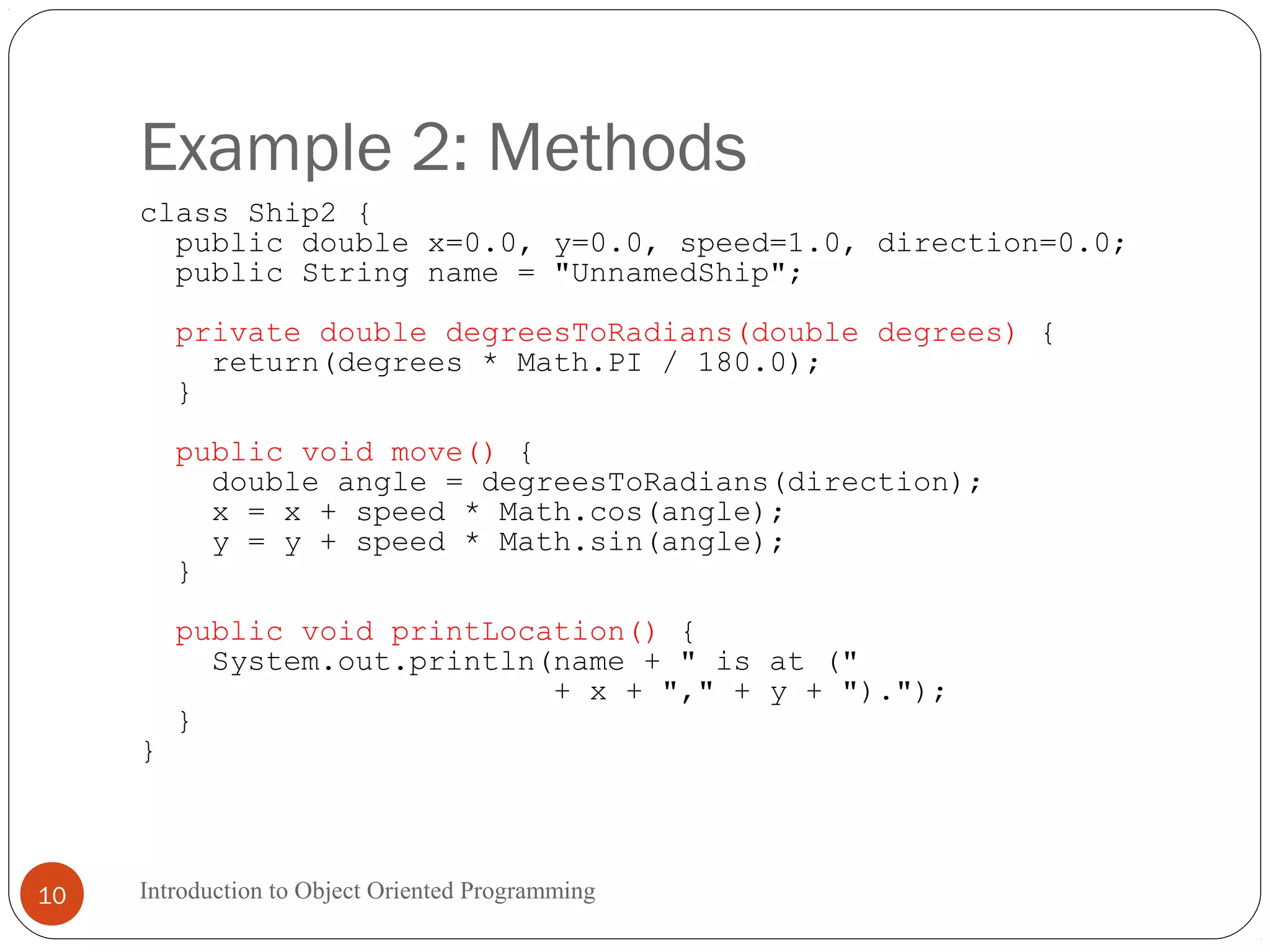
![Methods (Continued) Introduction to Object Oriented Programming11 public class Test2 { public static void main(String[] args) { Ship2 s1 = new Ship2(); s1.name = "Ship1"; Ship2 s2 = new Ship2(); s2.direction = 135.0; // Northwest s2.speed = 2.0; s2.name = "Ship2"; s1.move(); s2.move(); s1.printLocation(); s2.printLocation(); } } Compiling and Running: javac Test2.java java Test2 Output: Ship1 is at (1,0). Ship2 is at (-1.41421,1.41421).](https://image.slidesharecdn.com/javabasic-150605180937-lva1-app6891/75/Java-basic-understand-OOP-11-2048.jpg)
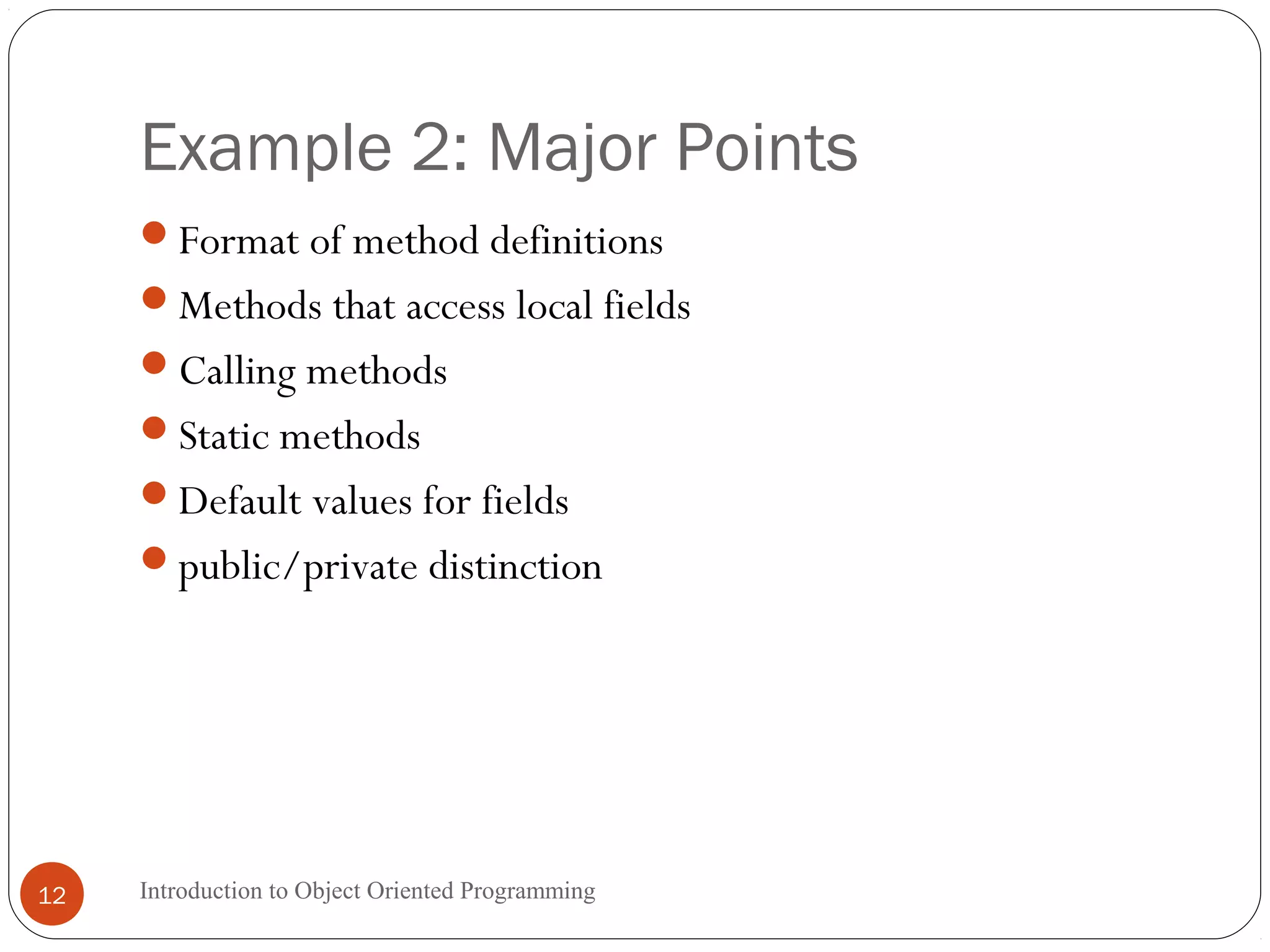
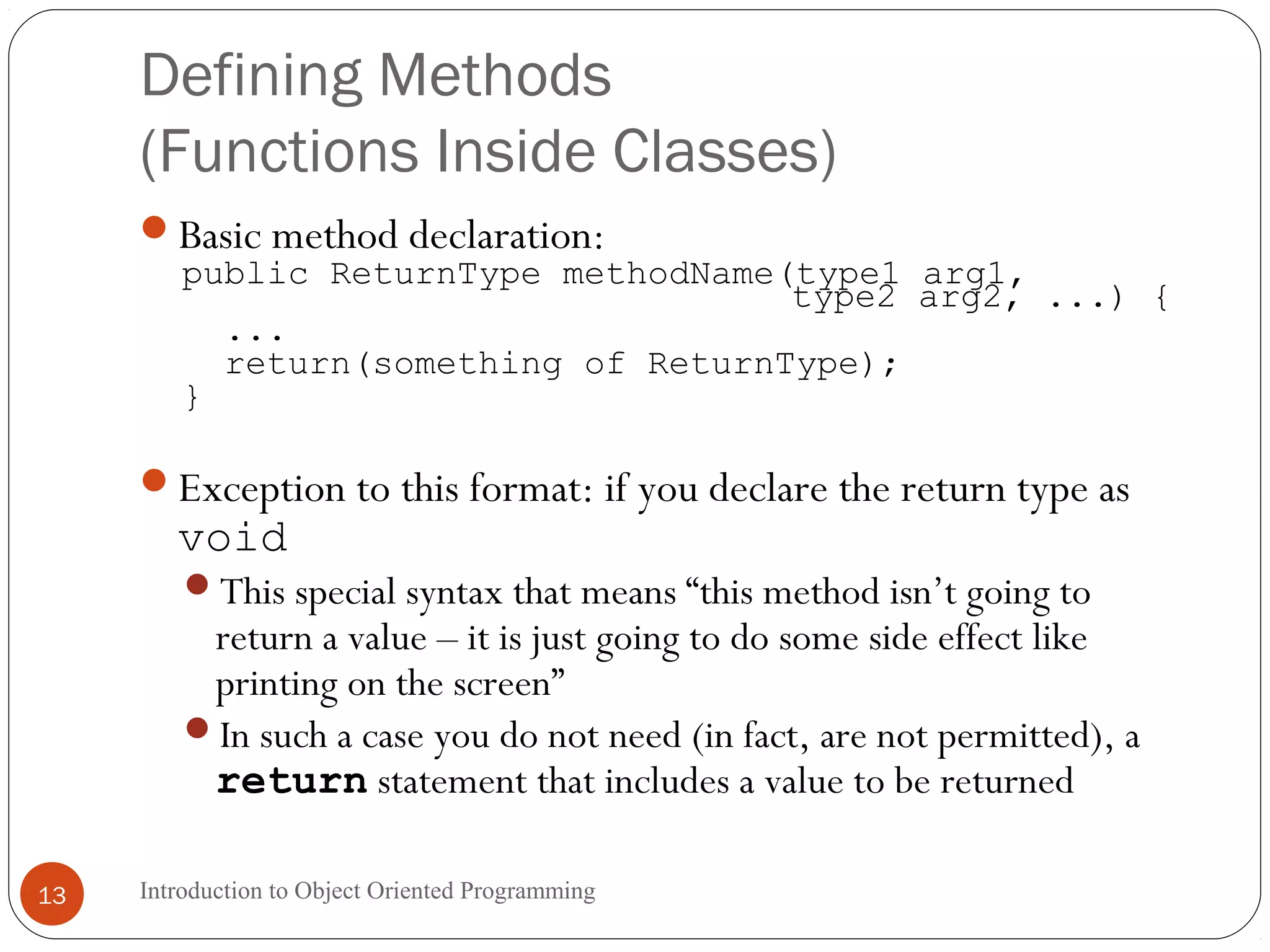
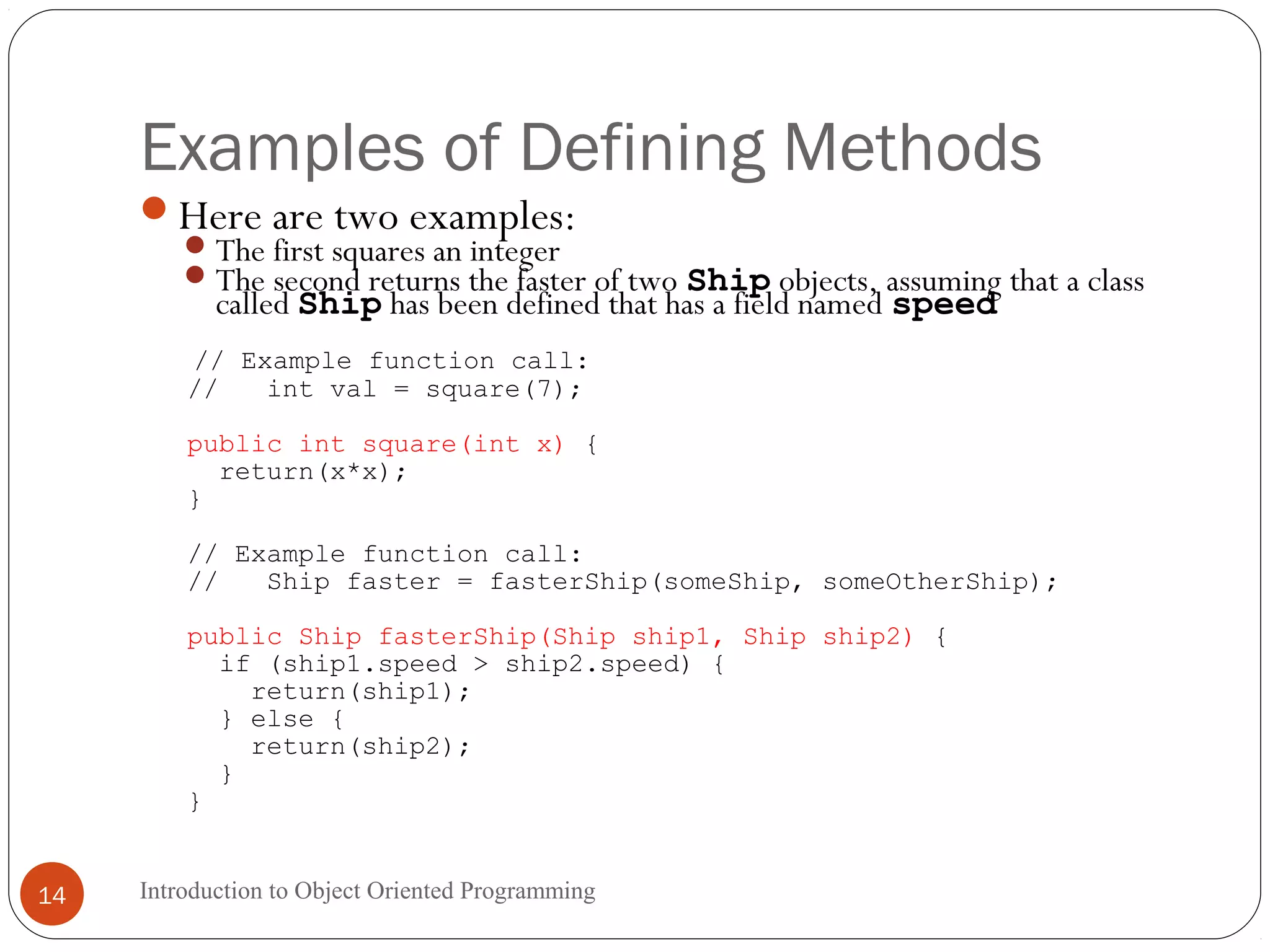
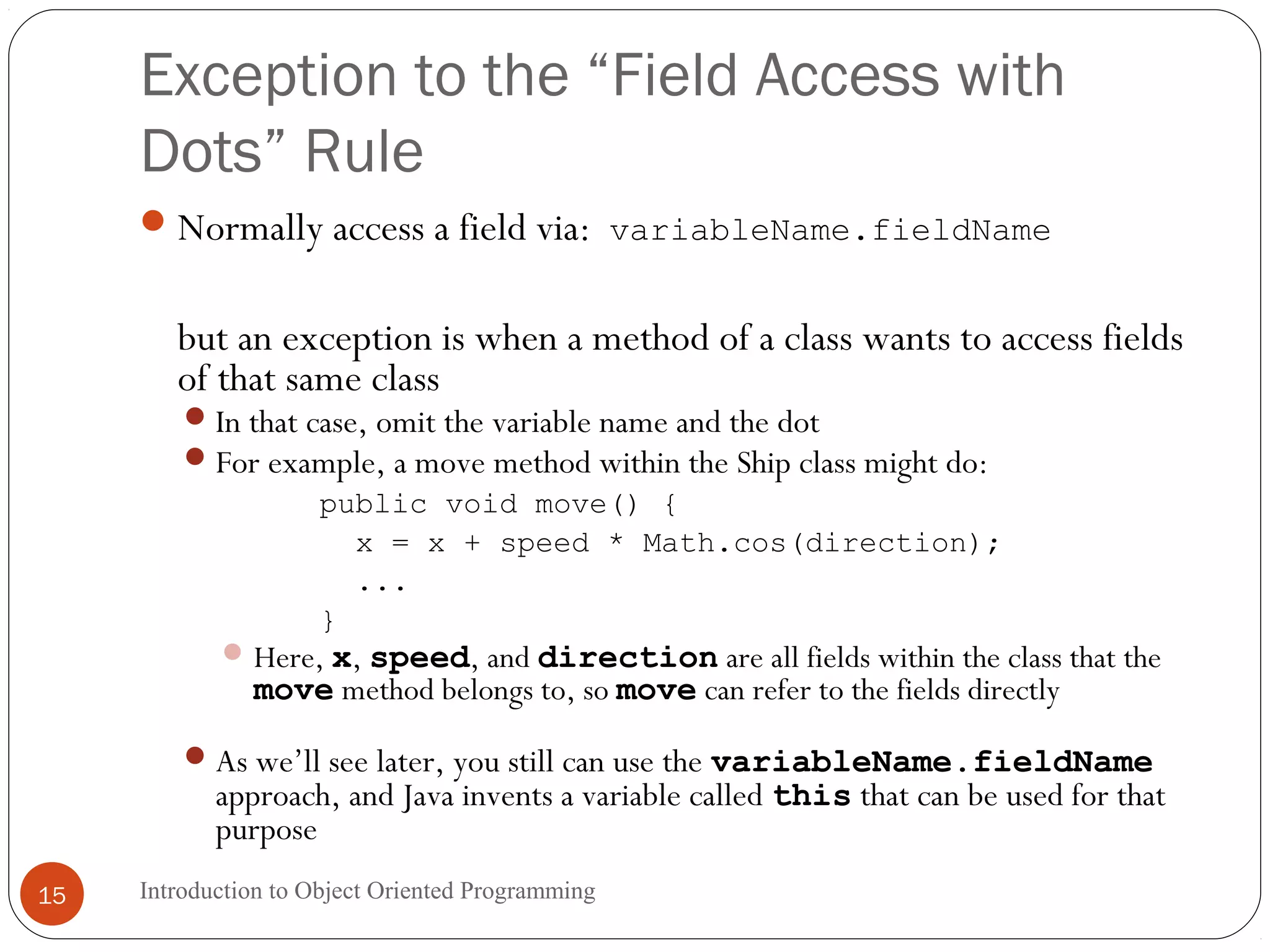
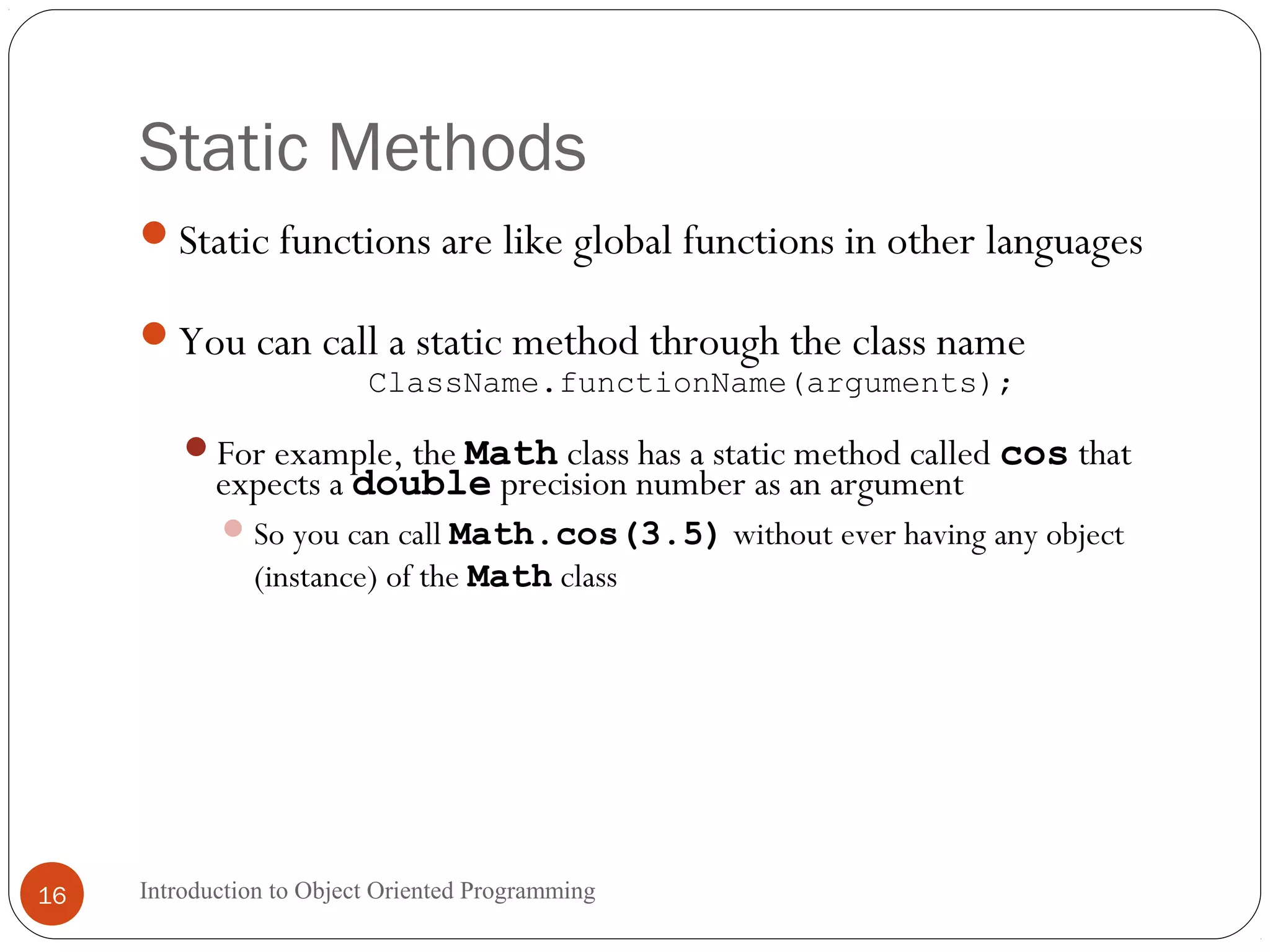
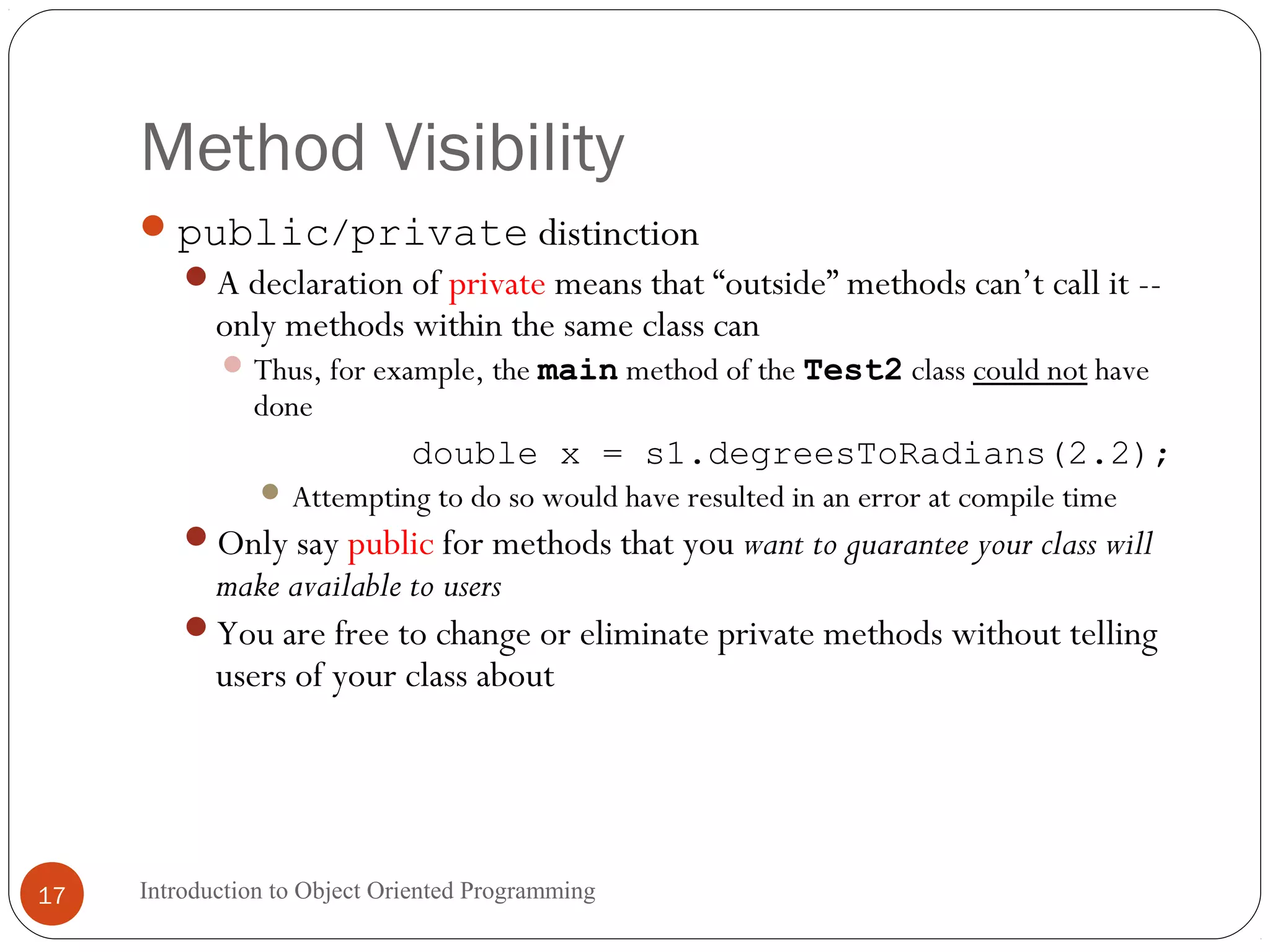
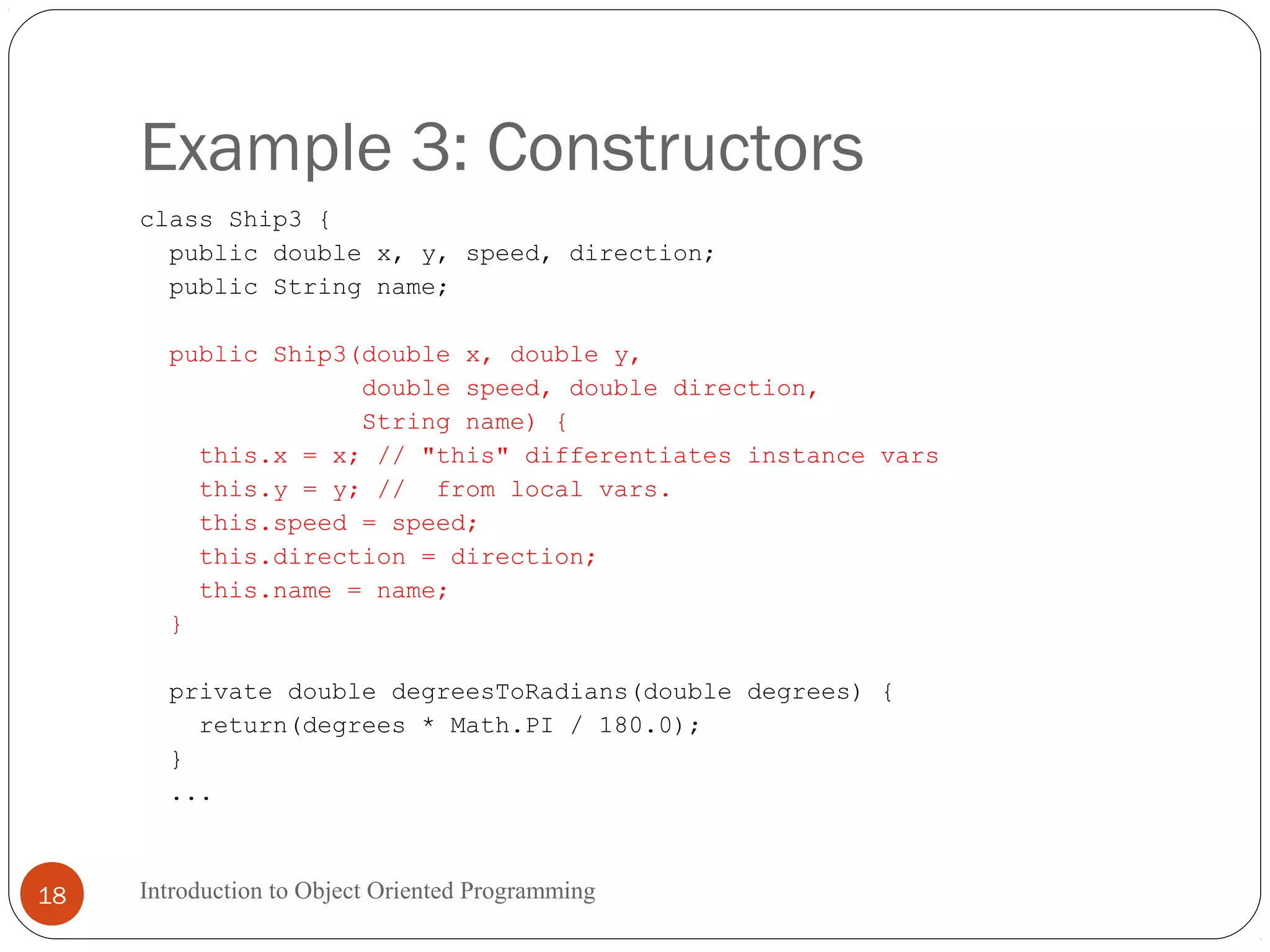
![Constructors (Continued) Introduction to Object Oriented Programming19 public void move() { double angle = degreesToRadians(direction); x = x + speed * Math.cos(angle); y = y + speed * Math.sin(angle); } public void printLocation() { System.out.println(name + " is at (" + x + "," + y + ")."); } } public class Test3 { public static void main(String[] args) { Ship3 s1 = new Ship3(0.0, 0.0, 1.0, 0.0, "Ship1"); Ship3 s2 = new Ship3(0.0, 0.0, 2.0, 135.0, "Ship2"); s1.move(); s2.move(); s1.printLocation(); s2.printLocation(); } }](https://image.slidesharecdn.com/javabasic-150605180937-lva1-app6891/75/Java-basic-understand-OOP-19-2048.jpg)
